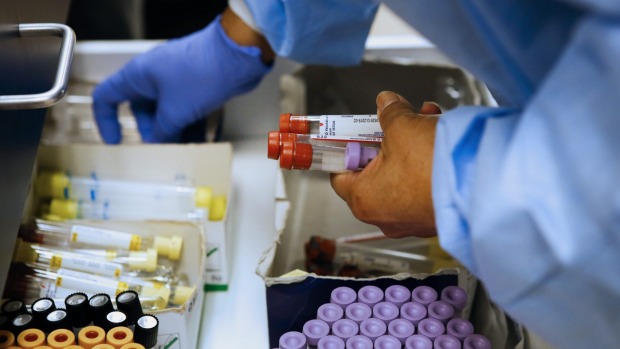
Hospitals must meet benchmark efficient prices for tonsillectomies and hip replacements. Patrick T. Fallon
by Geoff Winestock
Health experts want Prime Minister Tony Abbott to rethink a decision to scrap a system of standard prices for medical procedures that is showing signs of slowing growth in hospital expenses.
The issue of how to curb hospital costs flared this week at the Council of Australian Governments where states demanded an extra revenue source to compensate for the Federal spending cuts.
For the past three years, federal funding for state hospitals has been based on an assessment of the efficient price for each hospital procedure determined by the Independent Hospital Pricing Authority. The efficient price of a tonsillectomy is $3,534 and a hip replacement is $20,957. Some hospitals charge considerably more.
The system was invented in Victoria in the 1990s and written into national funding hospital agreements in 2011 by the Gillard government. NSW and Queensland have recently followed Victoria in using the benchmark prices to give an incentive to state hospitals with above-average costs for particular procedures to become more efficient.
The National Efficient Price, equivalent to the price of an average hospital admission, compiled by the Pricing Authority, grew by only 3 per cent last year, which is lower than the two previous years and only slightly more than inflation. That is considered a good result at a time when many other health costs rise much faster than inflation.
The federal government decided in last year’s budget to scrap the price scheme from 2017. Experts said the government should reverse this decision.
“The work that we have seen in the last couple of years in calculating and delivering the efficient price has made significant inroads into capping cost variations between hospitals and that should continue,” said Alison Verhoven, chief executive of the Australian Healthcare and Hospitals Association.
By 2030 NSW premier Mike Baird estimated that the funding gap opened by the Federal budget cuts would rise to $20 billion a year. Total hospital costs are expected to grow quickly because of the ageing population and the increased use of expensive technology.
Health experts were baffled by Mr Abbott’s comments at a press conference after COAG on Thursday which appeared to endorse a benchmarking system even though last year’s budget announced the current benchmarking system would be scrapped.
“If the Commonwealth’s contribution to public hospitals looks like it’s aligned to the delivery of good services at the best price, rather than simply a block grant handed over to a bureaucracy, that would be a big step in the right direction,” Mr Abbott said.
Jane Hill, a member of the IHPA board and Professor of Health Economics at the University of Technology, said Australia’s system of benchmarking was set up to do the sorts of things Mr Abbott was talking about. “He should explain what else he has in mind,” Professor Hall said. “The system is very widely admired internationally.”
Some ministers at COAG also called for a system of merging the hospital benchmark and the Medicare system of funding outpatient services in order to reduce cost-shifting between federally funded GPs and state-funded hospitals.
Ms Verhoven said this should not undermine the work of the IHPA. “While the AHHA supports the call for better coordination between primary healthcare and hospitals, the proposal to extend Medicare into our hospitals system must be approached with a view to developing sustainable and durable solutions.”
AFP
